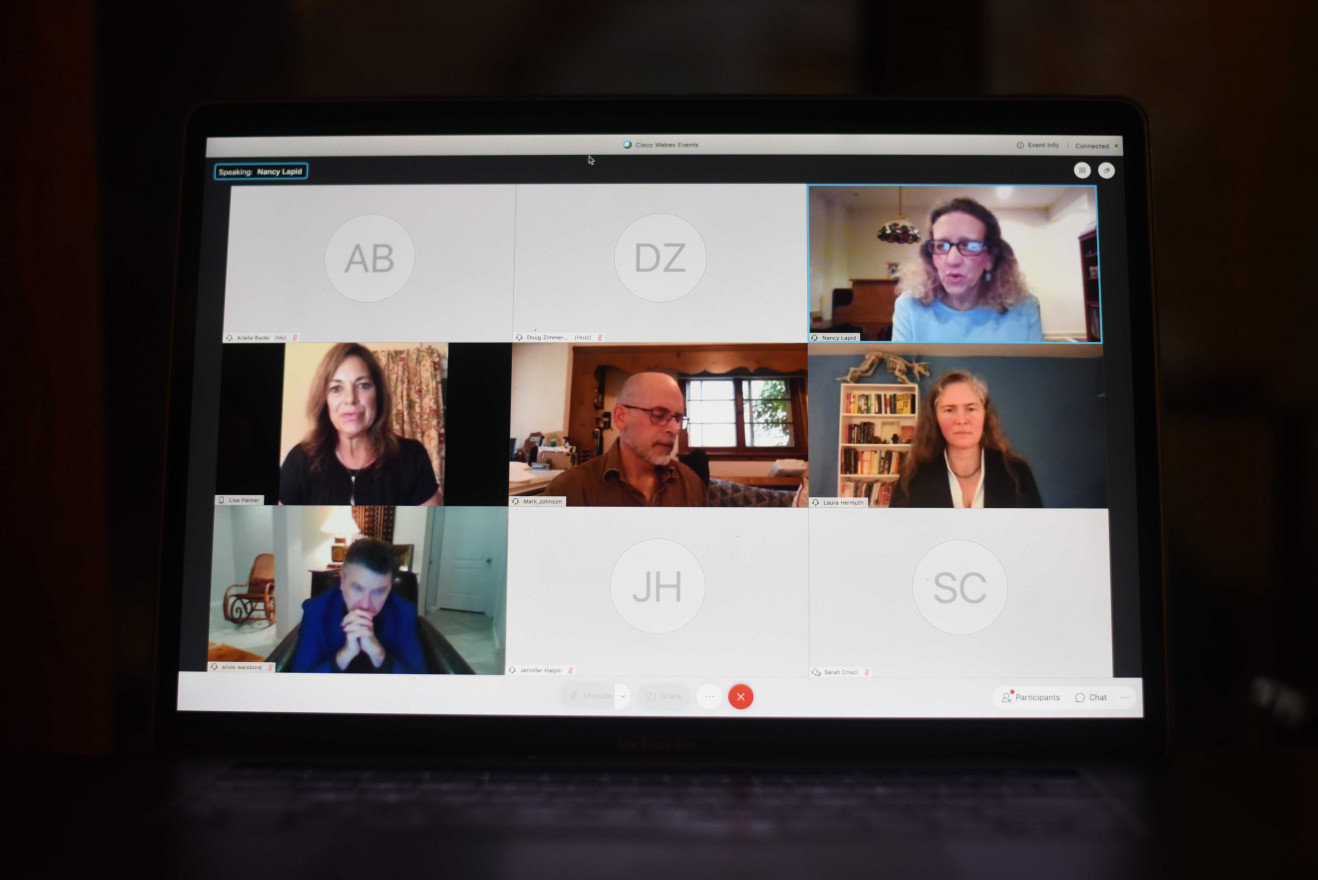
(Image by Arielle Bader)

(Image by Arielle Bader)
As the COVID-19 pandemic soared around the world, people turned to science for answers. Science communicators were on the front lines of understanding the virus, reporting trustworthy science and battling the spread of misinformation.
These thoughts were expressed by three journalists at the event, “Conversations in Science Communication: News, Journalism and a Global Pandemic”, hosted by the George Washington University School of Media and Public Affairs. Panelists were Laura Helmuth, the editor-in-chief of Scientific American, Mark Johnson, a science reporter for the Milwaukee Journal Sentinel, and Nancy Lapid, editor at Reuters Health Medical News.
SMPA Director Silvio Waisbord delivered opening remarks to 100 attendees on Webex and Lisa Palmer, the National Geographic visiting professor of science communication, moderated the discussion.
COVID-19 has infected 7,168,077 individuals since January 21 and caused 205,372 deaths, according to the CDC COVID-19 data tracker. The virus upended the entire world, causing everyone to demand answers from the scientific community.
Johnson spoke on the difficulties of reporting accurate science because research papers are being published so quickly.
“I kind of made a decision early on that I felt it was more important to tell people what the scientists were doing than to take too much of a paternalistic approach and say nothing is a story until it’s been peer-reviewed,” he said.
As information spreads rapidly, it is more difficult for journalists to speak to their audiences.
“It’s scary – it’s really hard to communicate with people when they are scared and confused, and that means we’re using all of our skills and experimenting in real-time to figure out how to get messages across in a way that people can hear and comprehend,” Helmuth said.
Helmuth acknowledged the coronavirus “landed in a massive moment of misinformation and disinformation,” adding that elaborate conspiracy theories have been released even from the President of the United States.
The misinformation became so dangerous that the magazine endorsed a political candidate for the first time.
“We felt it was our responsibility to use our platform to urge people to vote for Joe Biden,” Helmuth said.
She claims that the Trump administration is harming science and especially public health.
Lapid said that Reuters, the news organization where she works, declared a news emergency during COVID-19 and rearranged their reporting staff to involve the Medical Health News team more broadly.
“Reuters quickly realized the general news team needed help from my team who know the difference between DNA and RNA,” Lapid said.
Event attendee Heidi Estrada, a junior at GWU majoring in international affairs, was surprised to hear about the struggles journalists faced.
“I feel like journalists were often battling two different battles… the simple battle of understanding the science and the virus itself, and then fighting another battle of fighting the misinformation that was spread online,” she said.
Reflecting upon these times, each panelist shared a key takeaway learned from covering the pandemic.
Helmuth said it’s important to call out racism and lies and to not “give climate science skeptics a platform,” she said. Johnson shared that this profession is “endlessly humbling” and you will always be learning something new. Lapid encouraged students to develop sources and gain an understanding of basic science to support themselves.
The complete event is archived on GWU School of Media and Public Affairs’s Youtube channel.